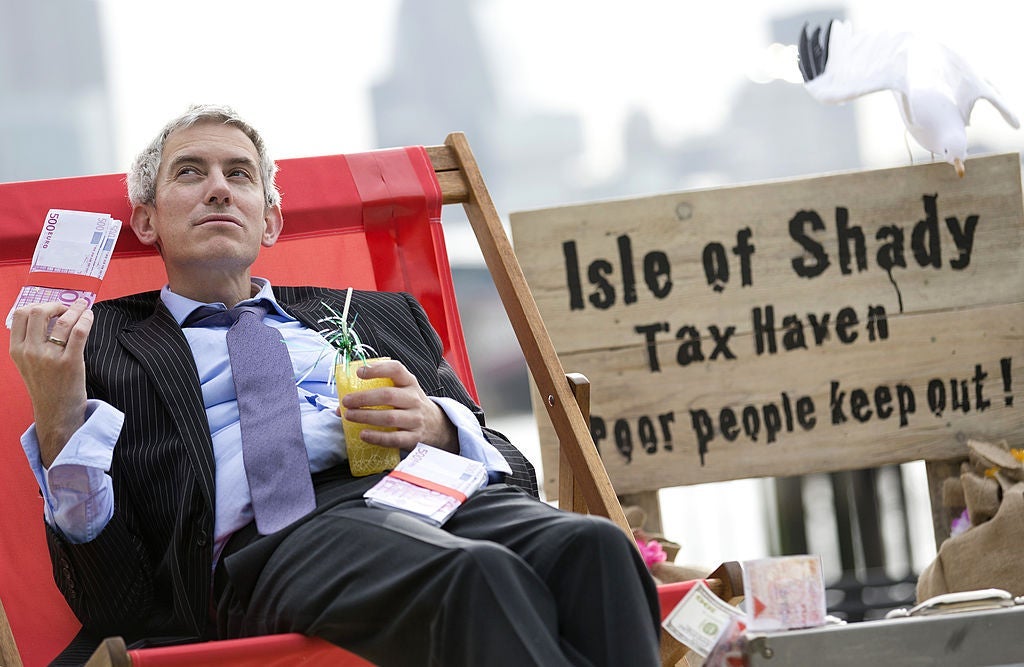
“Some ideas are so absurd, the adage goes, that only an intellectual could believe them.” So writes former White House economic advisor Joseph Sullivan in Foreign Policy, responding to the Biden administration’s support for OECD plans to tackle corporate tax avoidance.
The plan, originally published in October, consists of two sweeping changes to how corporate profits are taxed.
First, taxes would be levied not where businesses report their profits but where their customers actually reside. In a practice known as ‘profit shifting‘, multinationals routinely use intra-firm transactions to channel their profits to subsidiaries in tax havens. For instance, a company might earn 90% of its revenue in the UK but force its UK subsidiary to pay inflated royalties to a subsidiary in the Cayman Islands, reducing its UK profits to zero and increasing those of the Cayman subsidiary by the same amount.
Since corporation tax is levied on profits, this effectively allows the company to pick and choose its preferred tax rate. Switching to a tax based on the location of sales would mean that the UK is entitled to tax 90% of the company’s profits, regardless of where they are formally registered.
Second, the OECD plan would introduce a global minimum corporate income tax of 12.5% (or 21%, per the Biden administration’s proposal), eliminating the phenomenon of tax havens altogether.
Setting the stage for a tax conflict
Sullivan is particularly scathing about this second proposal. For one thing, he argues, getting federal systems to adopt a minimum corporation tax would be a political nightmare. Suppose there is a 25% global minimum rate, and Canada’s provinces levy a 10% rate. Corporations operating in Canada would end up paying a 35% effective tax rate, putting them at a disadvantage compared with countries without subnational taxes.
How well do you really know your competitors?
Access the most comprehensive Company Profiles on the market, powered by GlobalData. Save hours of research. Gain competitive edge.

Thank you!
Your download email will arrive shortly
Not ready to buy yet? Download a free sample
We are confident about the unique quality of our Company Profiles. However, we want you to make the most beneficial decision for your business, so we offer a free sample that you can download by submitting the below form
By GlobalDataOne option, Sullivan concedes, would be to allow this 10% tax to count towards the minimum rate, meaning that the central government could charge a rate of just 15%. (This is, he will be pleased to hear, exactly what the OECD is proposing.) Doing so, Sullivan cautions, would set the stage for conflict between national and subnational governments as they compete over a fixed amount of tax revenue.
Sullivan’s concerns might be warranted if the OECD was proposing a maximum tax rate, but that’s simply not the case. The upper limits to corporate taxation in Canada will remain exactly as they are now – a fuzzy boundary defined by a mixture of domestic politics and market behaviour.
If Sullivan really wanted to reduce conflict over tax revenues between central and regional administrations the best solution would be to, as the saying goes, ‘grow the pie’ – to increase the maximum feasible tax rate by reducing capital mobility. That’s not a question the OECD plan addresses, although it is certainly an avenue for future reform.
Why it won’t pay to stay out of the system
Another implementation issue that Sullivan points to is the incentive for staying out of the system. The more countries sign up to a minimum tax rate, he argues, the greater the benefits for any particular country that decides to go its own way. If Ireland and Luxembourg agree to raise their corporate taxes to 21%, this will only divert more funds towards Malta or Bermuda – reducing their incentive to sign up.
In another world, perhaps one in which OECD draft proposals are written on the back of cigarette packets, this might be a valid criticism. However, the reason why pro-tax groups are so enamoured with the proposals, and why business groups are allegedly planning “all-out war” in response, is the in-built incentive structures designed to get around this problem.
Suppose that the UK, but not Ireland, agrees to increase its tax rate from the current 19% to an international minimum of 21% (Ireland’s rate would remain at 12.5%). If that was the whole plan, then Sullivan would be quite right to say that it would only increase the incentive of UK firms to shift their profits to Ireland, the tax margin across the border having grown from 6.5% to 8.5%. As more countries signed up and more capital poured in, Ireland’s interest in signing up to the plan would become weaker and weaker.
Under the OECD proposals, however, the UK could charge its Ireland-operating firms a ‘top-up’ fee to make up the difference. A full 8.5% of the firm’s profits, the additional amount that Ireland would have claimed if its rate were at the international minimum, could be claimed by the UK Treasury.
In one swoop, this eliminates the competitiveness advantages accrued by Ireland through its low tax rate – at least for British multinationals, which own about 30% of the foreign subsidiaries operating in Ireland. If the US signed up, the proportion covered would rise to 73%.
No multilateral agreement? No problem
Though it does aim for multilateral agreement, the strength of the OECD proposal is that it doesn’t need to. Sullivan has it precisely backwards: the more capital-exporting countries sign up, the more the benefits of undercutting them will shrink.
In leveraging the market power of major economies to allow states to escape a destructive race to the bottom, could the OECD proposal offer a blueprint for improving workers’ rights or environmental standards?
“The US has always used its market access as leverage to get countries to move in its preferred policy direction,” says Todd Tucker, the Roosevelt Institute’s director of governance studies and a former member of Joe Biden’s transition team.
“The difference is that in the 1990s it was about intellectual property protections for large multinationals, whereas now there’s more a sense that workers and the climate need to be centred as the constituency of US trade policy.”
That shift was evident in the Trump administration’s renegotiation of the North American Free Trade Agreement, which introduced a requirement that 40% of each imported car be produced in factories with a $16 minimum wage. One of the leading negotiators in that deal was Katherine Tai, who is now heading up Biden’s trade policy as the US trade representative.
“Donald Trump was fighting very aggressively for the interests of digital companies; it just so happened that he also did some good stuff on workers’ rights,” says Tucker. “But that’s not going to be a footnote in the Biden administration’s policy. It’s going to be actually in the centre. I think that’s the shift that we’re seeing.”
Unlike Obama, however, Biden seems unlikely to make trade deals a core focus of his administration – meaning the opportunity to use such levers might be limited. If Biden is serious about decarbonisation and raising global living standards, however, he may have no choice.
Home page photo of a protestor dressed as a businessman by Justin Tallis/AFP via Getty Images.





